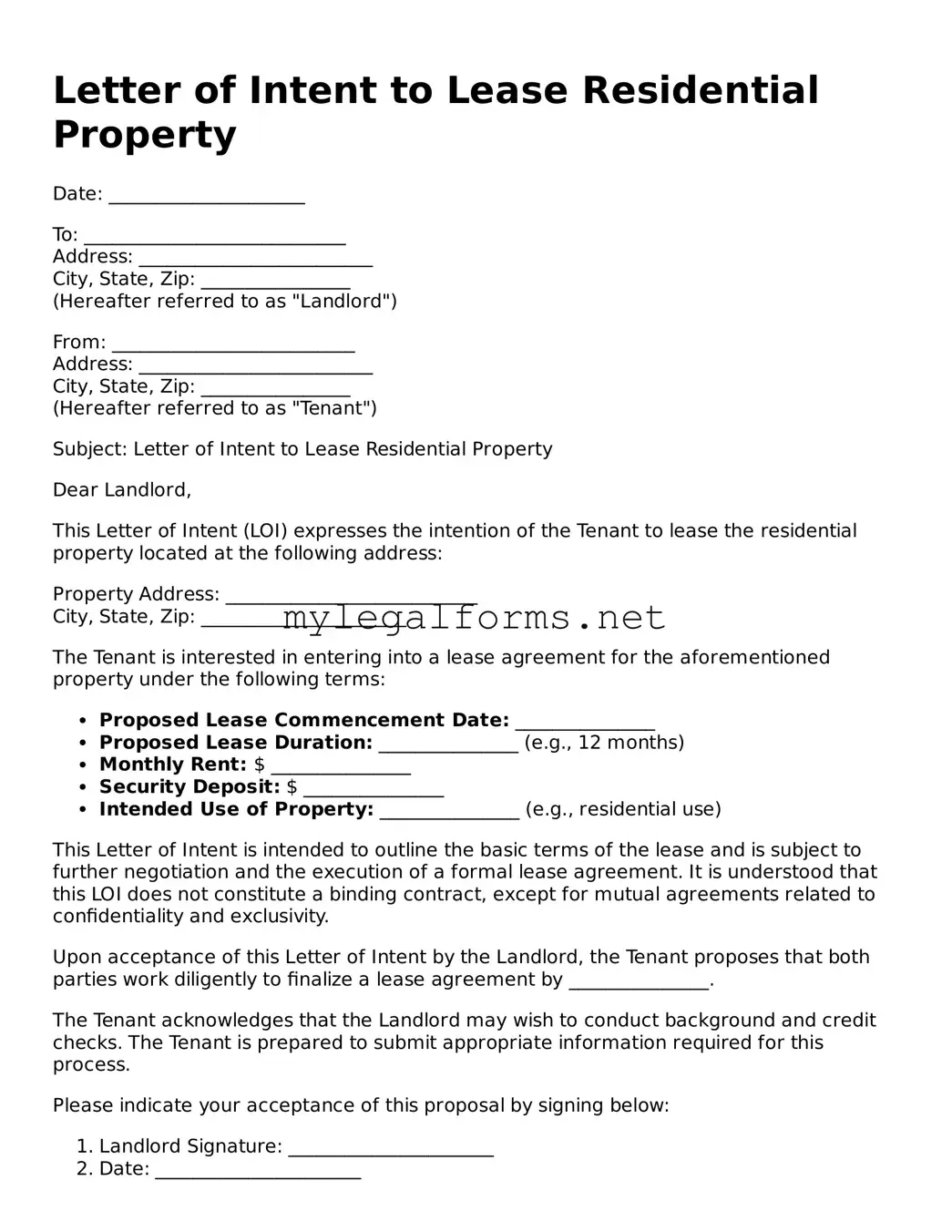Letter of Intent to Lease Residential Property
Date: _____________________
To: ____________________________
Address: _________________________
City, State, Zip: ________________
(Hereafter referred to as "Landlord")
From: __________________________
Address: _________________________
City, State, Zip: ________________
(Hereafter referred to as "Tenant")
Subject: Letter of Intent to Lease Residential Property
Dear Landlord,
This Letter of Intent (LOI) expresses the intention of the Tenant to lease the residential property located at the following address:
Property Address: ___________________________
City, State, Zip: ______________________
The Tenant is interested in entering into a lease agreement for the aforementioned property under the following terms:
- Proposed Lease Commencement Date: _______________
- Proposed Lease Duration: _______________ (e.g., 12 months)
- Monthly Rent: $ _______________
- Security Deposit: $ _______________
- Intended Use of Property: _______________ (e.g., residential use)
This Letter of Intent is intended to outline the basic terms of the lease and is subject to further negotiation and the execution of a formal lease agreement. It is understood that this LOI does not constitute a binding contract, except for mutual agreements related to confidentiality and exclusivity.
Upon acceptance of this Letter of Intent by the Landlord, the Tenant proposes that both parties work diligently to finalize a lease agreement by _______________.
The Tenant acknowledges that the Landlord may wish to conduct background and credit checks. The Tenant is prepared to submit appropriate information required for this process.
Please indicate your acceptance of this proposal by signing below:
- Landlord Signature: ______________________
- Date: ______________________
- Tenant Signature: ______________________
- Date: ______________________
Thank you for considering this proposal. The Tenant looks forward to your response and to a mutually beneficial leasing arrangement.
Sincerely,
______________________________
(Tenant's Name)
